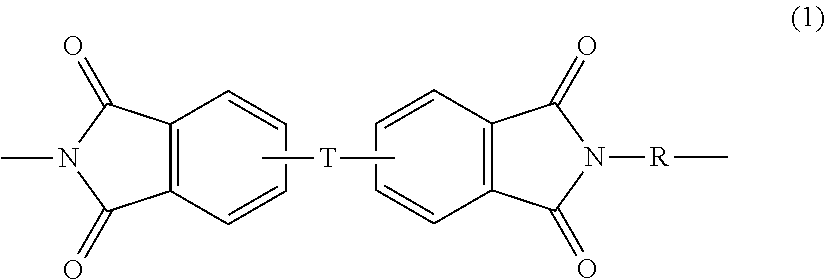Sterilized polyetherimide/polyphenylene ether sulfone articles
a technology of polyetherimide and polyphenylene ether, applied in the field of articles, can solve the problems of plastic components subjected to repeated rigorous challenges
- Summary
- Abstract
- Description
- Claims
- Application Information
AI Technical Summary
Benefits of technology
Problems solved by technology
Method used
Image
Examples
embodiment 1
[0085]A sterilized article comprising a sterilized polymer composition, treated with a member selected from hydrogen peroxide plasma, hydrogen peroxide vapor, and combinations thereof, the polymer composition comprising
[0086]a) from 80 to 20 weight % of a polyphenylene ether sulfone having a weight average molecular weight of 10,000 to 80,000 Daltons; the polyphenylene ether sulfone having the formula
[0087]
wherein n is 25 to 1000, R is selected from C1-8 alkyl, aryl, alkyl aryl, alkoxy, halogen, and combinations thereof, x is 0 to 4 and the aryl sulfone linkages are selected from 4,4′ linkages, 3,3′ linkages, 3,4′ linkages, and combinations thereof; and
[0088]b) from 20 to 80 weight % of a polyetherimide having a weight average molecular weight of 10,000 to 80,000 Daltons.
embodiment 2
[0089]The sterilized article of Embodiment 1, wherein after exposure to 300 cycles of the hydrogen peroxide plasma sterilization using a mixture of hydrogen peroxide vapor and hydrogen peroxide plasma for 30 minutes at 20 to 55° C., the color of the polymer composition of the article exhibits a color shift of delta E of 10 units or less relative to the color of the polymer composition of the article before the first hydrogen peroxide plasma sterilization cycle, wherein delta E is measured in accordance with ASTM D2244-05.
embodiment 3
[0090]The sterilized article of Embodiment 1 or 2, wherein after 300 cycles of the hydrogen peroxide plasma exposure the article has a weight loss of less than 5% of its initial weight before hydrogen peroxide plasma exposure.
PUM
| Property | Measurement | Unit |
|---|---|---|
| distance | aaaaa | aaaaa |
| weight % | aaaaa | aaaaa |
| weight % | aaaaa | aaaaa |
Abstract
Description
Claims
Application Information
 Login to View More
Login to View More - R&D
- Intellectual Property
- Life Sciences
- Materials
- Tech Scout
- Unparalleled Data Quality
- Higher Quality Content
- 60% Fewer Hallucinations
Browse by: Latest US Patents, China's latest patents, Technical Efficacy Thesaurus, Application Domain, Technology Topic, Popular Technical Reports.
© 2025 PatSnap. All rights reserved.Legal|Privacy policy|Modern Slavery Act Transparency Statement|Sitemap|About US| Contact US: help@patsnap.com



